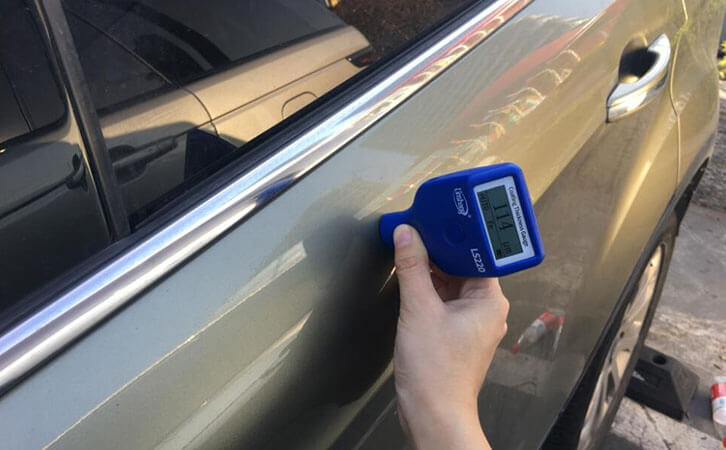Precautions and Application Magnetic Coating Thickness Gauge
1. Where can magnetic coating thickness gauge be used for?
Magnetic induction thickness measurement can be used to measure the thickness of the non-magnetic coating on the magnetically per io9meable substrate. Generally, the relative permeability of the substrate is required to be above 500. If the coating material is also magnetic, the difference from the permeability of the substrate must be sufficiently large. At present, magnetic coating thickness gauges are often used for coating thickness detection of various products such as car paint thickness, iron-based surface rubber thickness and enamel thickness.
The magnetic coating thickness gauge uses a probe with a coil around a soft core to be placed on the detected object. The instrument automatically outputs a test current or test signal. Early products used a pointer meter to measure the magnitude of the induced electromotive force. The instrument amplifies the signal and indicates coating thickness. New instruments introduce new technologies such as frequency stabilization, phase lock, temperature compensation, etc., use magnetoresistance to modulate the measurement signal, use integrated circuits and introduce a microprocessor to greatly improve measurement accuracy and repeatability.
The resolution of modern magnetic coating thickness gauge can reach 0.1μm, the allowable error can reach 1%.. The magnetic coating thickness gauge can be used to accurately measure the paint layer, porcelain, namel protective layer, plastic, rubber coating, various non-ferrous metal coatings including nickel chromium.
2. Measurement precautions for magnetic coating thickness gauges
The magnetic coating thickness gauge is mainly used to calculate the thickness value of the magnetic field with the change of the magnetic field strength. Therefore, any influence on the magnetic field strength will directly lead to measurement errors. The specific situations are as follows:
(1) The tested material itself contains magnetism
Some materials require a residual magnetic field in the measured material during processing or certain processes. Due to its uneven distribution, the measured values in some parts suddenly become larger or smaller.
(2) Different shapes and shapes of tested materials
The magnetic field distribution on workpieces with different structures will vary with the structure and shape, which will cause measurement errors.
(3) Different parts of the same material
It may also produce magnetic field changes, such as the edge of the material and the middle region, the magnetic field distribution is not the same will cause measurement errors.
The above situations are all errors caused by electromagnetic fields. To solve these problems, you should follow the corresponding measurement principles to avoid these errors as much as possible.
3. How to choose a magnetic coating thickness gauge?
Ferromagnetic metals are very different from non-ferromagnetic metals. Therefore, special magnetic coating thickness gauges are used when measuring the coating thickness on ferromagnetic metal substrates, but there are currently some coating thickness gauges that can measure two types of metal substrates, such as the magnetic coating thickness gauge LS220H.
- High precision coating thickness gauge for used car
- Automotive paint protection films coating thickness gauge
- Plating Thickness Measuring Instrument for Detecting Anti-corrosion Coating
- Linshang LS220, LS191, LS160A– Necessary for Car Cover Inspection
- Coating Thickness Gauge for Second Hand Vehicle
- Zero Adjustment Step of Coating Thickness Gauge
